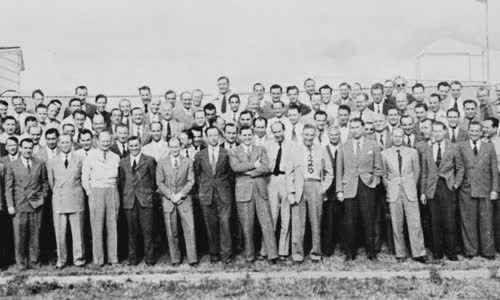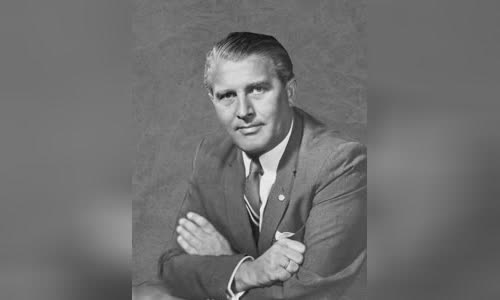In order to prevent German technology from falling into the hands of the Soviet Union, the United States conducted the Paperclip Campaign, secretly recruiting more than 1,600 Nazi scientists.
During the end of World War II, the Nazis became more and more desperate due to the increasingly exhausted resources and still could not defeat the Soviet Union.

The group includes 104 German missile experts at Fort Bliss, Texas, USA, in 1946 Photo: NASA
In 1943, Germany gathered their "priceless treasure" of scientists, mathematicians, engineers, technicians and 4,000 rocket experts, then brought them all to Peenemunde port on the Baltic Sea,
Werner Osenberg, head of the German Association for Defense Research, is responsible for identifying which scientists will be recruited, by creating a complete list that is scrutinized.
Meanwhile, the United States has become increasingly familiar with Germany's secret biological weapons program.
"The Paperclip campaign actually started when the United States realized that Hitler had built an entire store of nerve toxins and was working on a plague weapon. The Pentagon suddenly thought about the possibility of acquiring a nerve."
In 1945, the time when the Allies gradually regained territory across Europe was also the time when the US began to gather German intelligence and technology.
Initially, the United States was only interested in capturing and interrogating the scientists identified on the Osenberg List, on a mission called Operation Cloud in the Cloud.
Therefore, on May 22, 1945, the Allies attacked the port of Peenemunde and captured the scientists, who were then working hard on the V-2, the first long-range guided ballistic missile.
The newly formed Joint Intelligence Target Agency (JIOA) and the Strategic Intelligence Agency (OSS), the predecessor of the US Central Intelligence Agency (CIA), were assigned to take over the mission.
Although he approved the campaign, President Harry Truman still asked not to hire anyone who was involved in the Nazis.
The agency did not thoroughly examine any scientist's background before bringing them to the US, and removed evidence of crime if it found them in their records.

Wernher von Braun, a German scientist recruited by the US during the Paperclip Campaign Photo: Wikimedia Commons.
Scientists recruited during the campaign included top German rocket expert Wernher von Braun, who had forced prisoners at the Buchenwald concentration camp to work on his missile program.
"The US government, especially NASA, has been complicit in the bleaching of Braun's past," commented author Jacobsen.
After arriving in the United States in 1945, Braun worked in the missile industry for the military in Fort Bliss, Texas, responsible for overseeing the V-2 missile tests.
In 1960, he was transferred to NASA and helped the agency launch the first satellites into space on July 20, 1969, as part of an attempt to win the US space race.
In addition to Braun, former Nazi party members are present in nearly every key department at the Marshall Space Flight Center.
Otto Ambros, a chemist favored by the fascist Hitler, was tried in the German city of Nuremberg on charges of mass murder, but was eventually tolerated to serve America's ambitions to explore the universe.
Most of the information about the Paper Clip Campaign has yet to be disclosed, except for details in Jacobsen's book.
Many German researchers were involved in the Holocaust genocide, but "bleached" by the JIOA, who later allegedly served the MK Ultra, a CIA-backed top secret program whose primary goal was to create a curative drug.
Proponents of the Paperclip Campaign justify that the JIOA recruits only moderate-minded scientists, but this claim is deemed inaccurate.



 Ben Myers
Ben Myers







